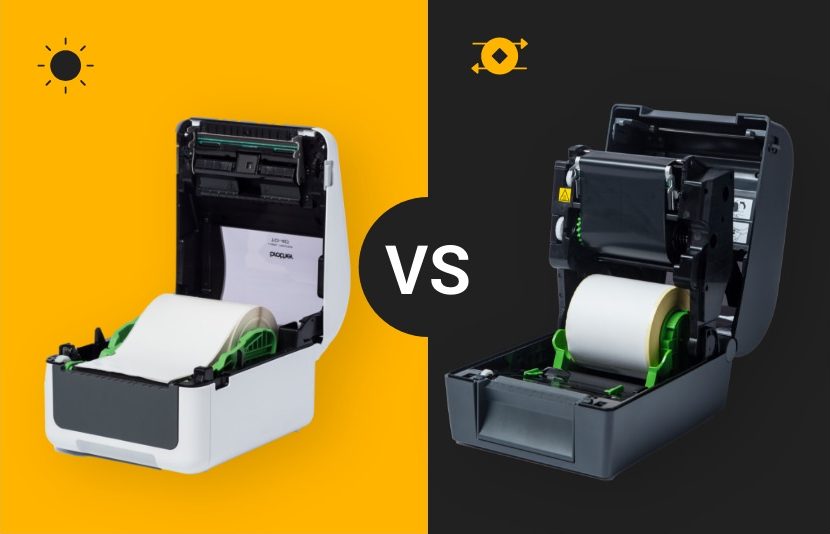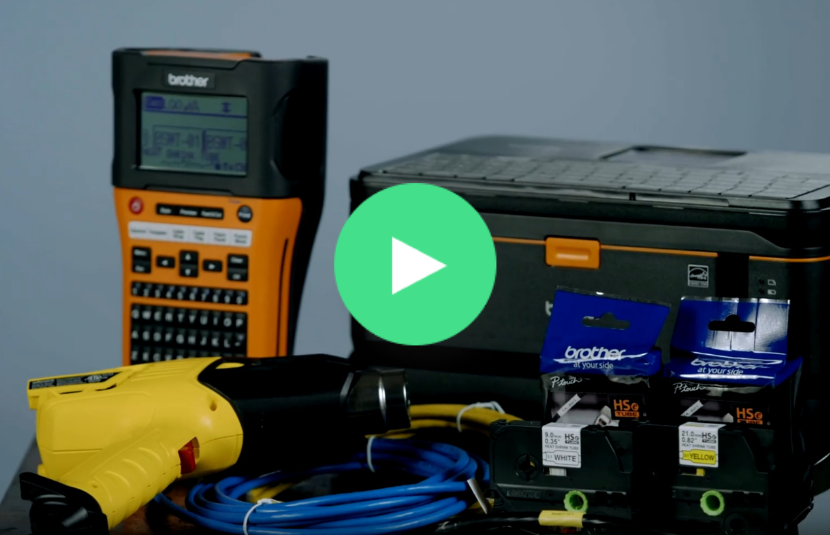Design & print industrial labels from your phone on the compact EDGE portable.

Direct Thermal vs. Thermal Transfer – Which Print Technology Works Best?
What is the difference between direct thermal and thermal transfer printing?
Direct thermal and thermal transfer printing are two different thermal printing methods for producing high-quality labels and other printed media. Both technologies are great choices for printing barcodes, text and images, but understanding the differences between the two technologies will help you select the ideal printer for your application.
To make the right choice, watch our brief video. Then keep reading to get all the details you need on these distinctive thermal print technologies.
Direct thermal printing
A direct thermal printer prints by applying heat to the material. It does not use any ribbon, ink or toner, but it requires a special type of heat-sensitive material that blackens when heat is applied.
Because the label material is heat sensitive, it fades and the label can become hard to read and scan over time. In addition, direct thermal labels are sensitive to abrasions and exposure to water, chemicals, and strong sunlight.
For these reasons, direct thermal printing is not the best choice for long-term use. By the same token, direct thermal printing still provides a sufficient lifetime for many applications. In general, direct thermal is best for applications that require a label that needs to last less than six months, such as shipping labels, receipts, tickets, and labels for perishable goods.
Due to their simpler, ribbon-free mechanics, direct thermal printers are more compact, and most mobile printers use direct thermal technology.
With no ribbon needed to print, direct thermal printers are also easy to operate and have fewer components that can fail. Usually, these printers have a lower purchase price and require less maintenance and repair attention than thermal transfer printers. And while direct thermal labels are slightly more expensive, you don’t have to spend money on ribbons.
| Pros | Cons | |
|---|---|---|
Is not UV, abrasion, water, and chemical resistant |
||
No ink, toner, or ribbons |
||
Readability life of 6 months |
||
Highly mobile and compact |
|
|
Fewer components |
|
|
Slightly more expensive |
Thermal transfer printing
Thermal transfer printers use ribbons made of wax or resin-based ink that melt onto the printing media (e.g., a label or similar) and create a long-lasting, high-quality image. This technique provides unmatched printing quality and durability.
Thermal transfer printing is ideal for long-term applications in which the printing media will be used for more than six months or will be exposed to harsh conditions such as chemicals, light, high temperatures or water. For this reason, thermal transfer printing is great for asset tracking, laboratory specimens and blood bags, outdoor applications, permanent identification, and cold and freezer storage.
Thermal transfer offers a large variety of printing materials, including paper, plastic and polyester. These materials have varying levels of longevity, with polyester being the most durable with the longest lifetime. Label materials can be carefully matched with different types of ribbons for maximum durability. In addition, thermal transfer printers provide the option to use colored ribbons to improve label appearance or to streamline operation with color-coded labels.
Some thermal transfer printers can also operate in direct thermal mode without the use of ribbons. This can be a good option for smaller businesses that want the extra flexibility but do not want the hassle or cost of multiple printers.
| Pros | Cons | |
|---|---|---|
UV, abrasion, water, and chemical resistant |
||
No ink, toner, or ribbons |
||
Readability life of 6 months |
||
Highly mobile and compact |
|
|
Fewer components |
|
|
Slightly more expensive |
Which thermal printer should I choose?
The most important things to consider when selecting between the two technologies are:
- The required lifetime of the label/printed media
- The type of environment to which the label will be exposed
Direct thermal printers are great for short-term applications (less than six months), while thermal transfer printers are best suited for long-term applications (more than six months) or if the label will be exposed to extended outdoor use or other harsh conditions.
Because of their unique benefits and drawback, direct thermal and thermal transfer print technologies will continue to coexist and be used for different applications within a given organization. While thermal transfer printers might prove useful for original product marking, direct thermal printers might remain the go-to choice for pick tickets and shipping.







